Cuajiniquil × 3 - June 2024
First timers
A third time diving in Cuajiniquil during 2024 for me! This time I went with work colleagues that were getting their Open Water certification. As you may have read, I am not currently working as a scientist but as an analytics engineer, so my surroundings are a bit far from sea and science. Anyways, if you’re interested in getting your certification, contact me to arrange a fun trip!
Visual IDs
To identify a creature, possibly the best way is to collect it and go through a taxonomic key to get down to species or as “low” as you can. Of course a recreational dive has no aim for it, I was just looking to get some cool pictures.
I’m familiar with many species, but not all of them. During the dive and after reviewing the pictures, my curiosity kicks in whenever I can’t identify something. Especially if I can’t even rank it on anything lower than phylum! As I’m no expert in cnidarian (think of corals and jellyfish) taxonomy, this one has been a headache for me:
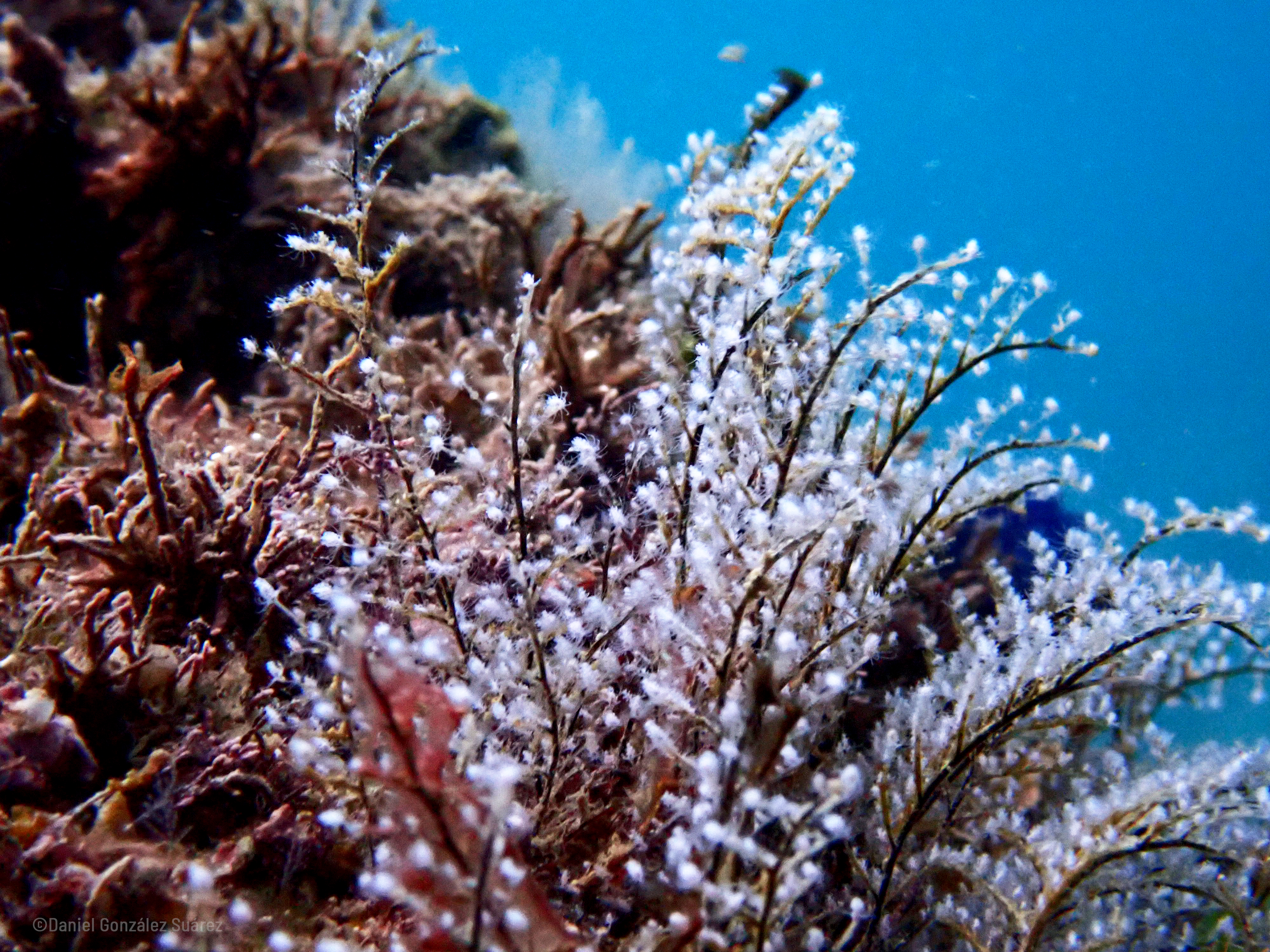
As a marine biologist with a strong preference to study marine invertebrates, I’m familiar with the creatures I’m seeing but not always down to genus or species. I knew this one was a hydroid but had no idea what order or family it was, so I had to do some research. The most fun I get out of this is learning, as dorky as it sounds. I’ll go through my learnings here to share them with you, but will need to add some context so first, let’s revisit the taxonomic ranks using humans as an example (with other examples inside parenthesis).
- Kingdom: Animalia (other kingdoms like plants and fungi are here)
- Phylum: Chordata (seastars in Echinodermata, crabs in Arthropoda, octopusses in Mollusca)
- Class: Mammalia (dogs, killer whales, seals)
- Order: Primates (a dog would be placed in Carnivora, where you can also find cats and raccoons)
- Family: Hominidae (let’s keep it up with dogs! Canidae would be their family)
- Genus: Homo (Canis for dogs, where you can find also wolves and coyotes)
- Species: Homo sapiens (Canis familiaris, our family dogs!)
- Genus: Homo (Canis for dogs, where you can find also wolves and coyotes)
- Family: Hominidae (let’s keep it up with dogs! Canidae would be their family)
- Order: Primates (a dog would be placed in Carnivora, where you can also find cats and raccoons)
- Class: Mammalia (dogs, killer whales, seals)
- Phylum: Chordata (seastars in Echinodermata, crabs in Arthropoda, octopusses in Mollusca)
As you can see, the lower we go down taxonomic ranks, the less species are part of that group. This means that we’re filtering results based on features, like a game of Guess Who? A dog, a killer whale and a raccoon are part of the same phylum and class but killer whales are not part of the same order. Dogs and raccoons belong to different families and so on. I should note that these ranks can have ranks within themselves (for example: subphylum, infraorder, etc…) which will be important for the next example.
If I know an invertebrate is a cnidarian and not a marine sponge, then I look only for cnidarians. If I know it is not a coral or anemone, then I look only for the other groups and so on. So far, I know that this species belongs to:
- Phylum: Cnidaria
- Subphylum: Anthozoa (corals, anemones…), Endocnidozoa (no idea but definitely not the one in question) or Medusozoa. Let’s go with Medusozoa
- Class: here it gets trickier. We have four: Cubozoa, Scyphozoa, Staurozoa and Hydrozoa. I can’t justify why I’m discarding the first two but the third one has a “stalked” medusa stage and it is not found in the tropics. I know it belongs to Hydrozoa
- Order: There are three. Anthoathecata, Leptothecata, Siphonophorae. The last one is mostly pelagic, meaning that it is not bound to the sea floor, which leaves us with the two other options.
- Class: here it gets trickier. We have four: Cubozoa, Scyphozoa, Staurozoa and Hydrozoa. I can’t justify why I’m discarding the first two but the third one has a “stalked” medusa stage and it is not found in the tropics. I know it belongs to Hydrozoa
- Subphylum: Anthozoa (corals, anemones…), Endocnidozoa (no idea but definitely not the one in question) or Medusozoa. Let’s go with Medusozoa
Leptothecatha, Anthoathecata? What??? Good thing about scientific nomenclature is that some (if not most) names have an etymological sense, so let’s try to understand what’s going on.
Lepto-, thin; Antho-, flower; -thecata, like a box or a shell. Okay, both have -theca in their names, which means that this is an important feature. Let’s break down these words.
Leptothecata: Lepto-, thin; -thecata, “shell”, which for this group is called a hydrotheca or gonotheca, depending on what it is covering. I looked up examples of what a hydrotheca looks like and it may be visible to the naked eye in some species. Is it visible in this one? I’m not sure.
Anthoathecata: Antho-, a-, -thecata. The key here is the “a-“ part of the word. When we use the “a-“ prefix, it means that there is a lack of something so now we know that species in Anthoathecata look like flowers and have no “theca” (specifically, it is called hydrotheca).
After all of this information you just read, it is important to note something about the life cycle of cnidarians: they have a medusa and a polyp stage. Think of most medusa stages as the jellies we know. The polyp stage is what we’re looking at in the picture.
Based on this book, Marine Biodiversity of Costa Rica, Central America by Werhtmann and Cortés (2009), I look up the taxonomic groups in question and try to find answers based on the families and species reported. I look for images of the families and species to see what they look like and start deciphering more about this one.
In other cases, it has worked for me. This time I don’t feel confident about anything. I don’t know if it has a theca or not and my course of action now is either uploading a picture to the Facebook group ID Please (Marine Creature Identification) or to iNaturalist and have someone help me. I will update this post once I get an answer! But it looks an awful lot like Pennaria
Another mistery creature!
Well, that was a lot of text. This one will be shorter and I just want to highlight the use of communities to get answers. I took a picture of this sea urchin Eucidaris thouarsii but until I was looking at the picture, a friend told me to look at that.

To get an answer on a possible ID, I posted the picture in the Crustacean Identification Group on Facebook. I will update this post once I get an answer!
Puffers galore
I saw so many pufferfish this time. Diodon holocanthus, Sphoeroides lispidus and Arothron hispidus were the species. If you saw the previous posts, go check them out in A Guide to the Shorefishes of the Tropical Eastern Pacific!

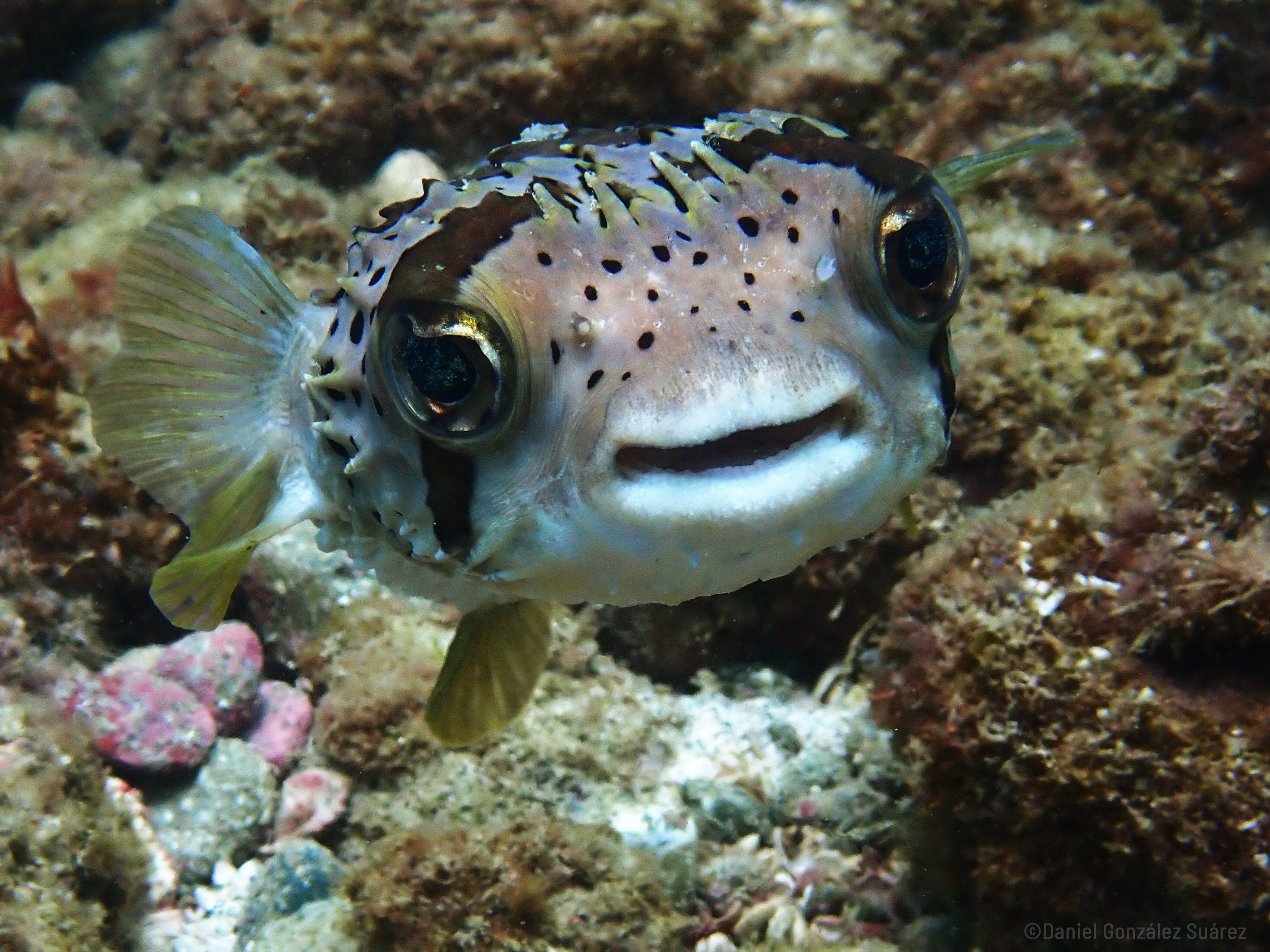
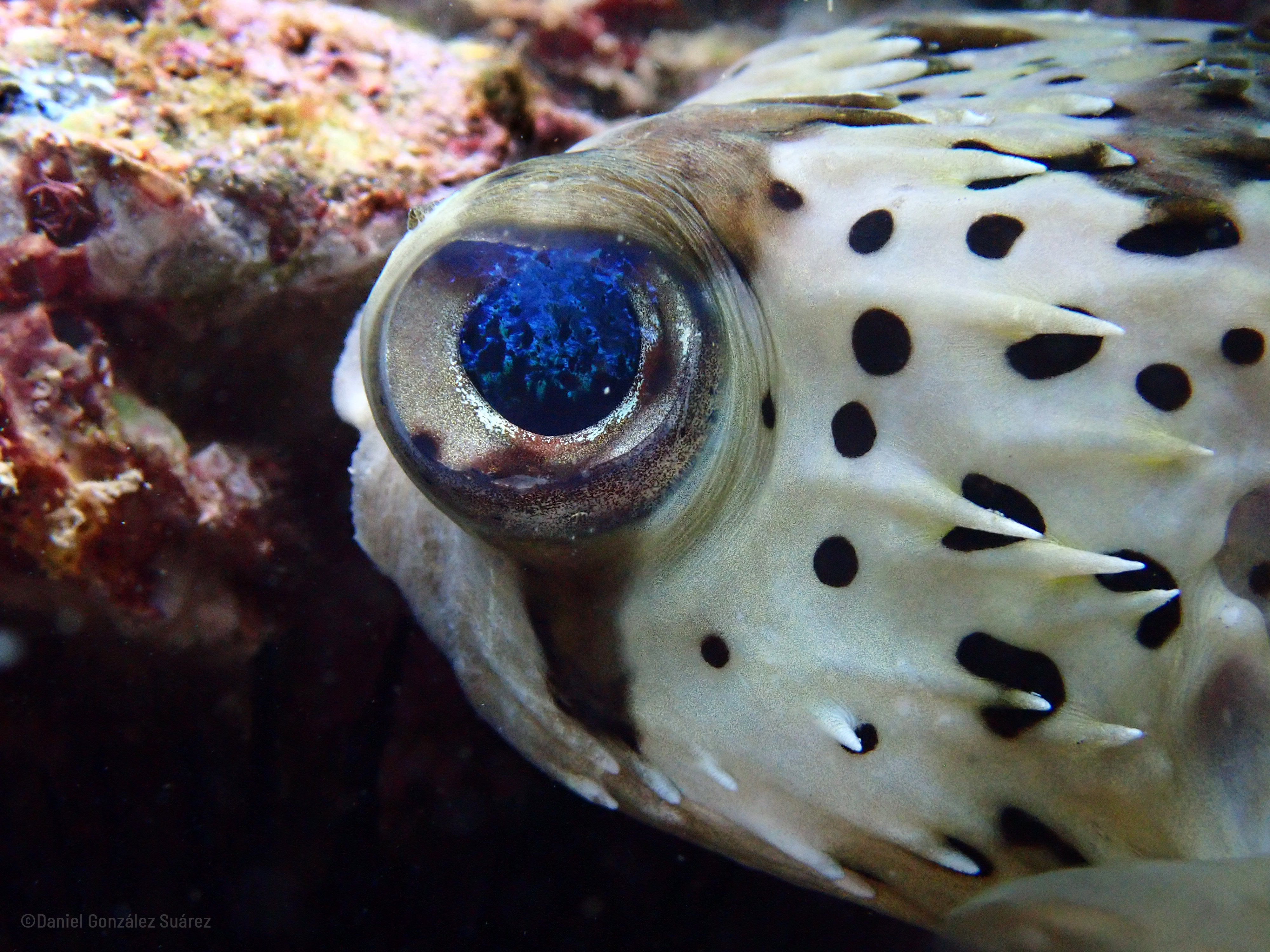


AI stuff?
Taking pictures of moving fish hasn’t been easy for me. I saw an eye-catching Pomacanthus zonipectus in its juvenile stage.

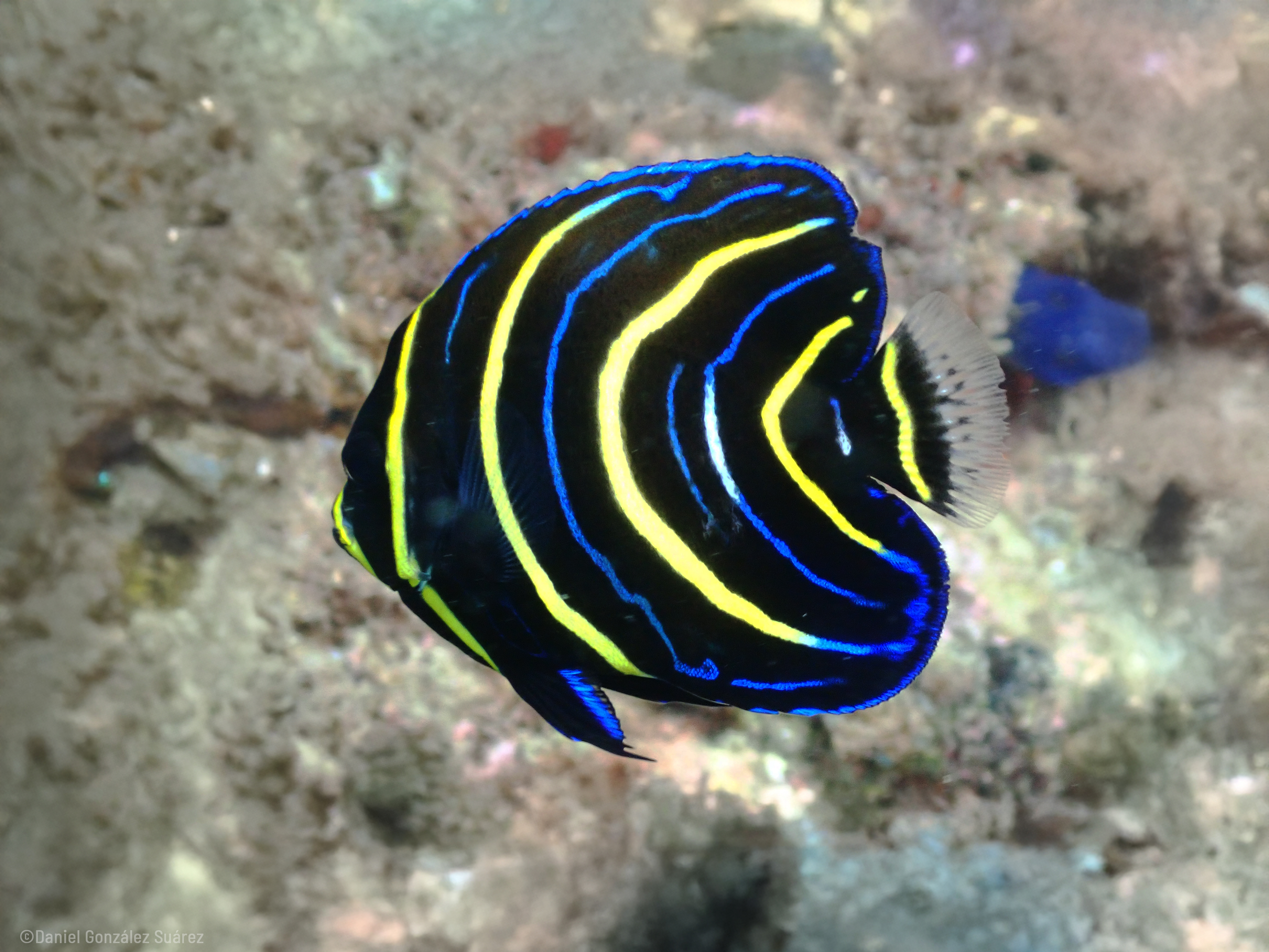
The picture to the left is a crop from the original. The one to the right was cropped even more because I wanted to align the fish to the center, as well as to rotate it. By doing the croppings, of course the picture gets smaller but using PhotoShop, I asked the tool to expand the background using generative AI. I think it’s a good choice to save some pictures, though I’m definitely not a fan of GenAI art and its use so far.
So close yet so far
In this picture, you see mainly two species: Rhopalea birkelandii and Tubastraea coccinea. The first one is an ascidian and the second one a cnidarian, like the first mystery creature. Even though they look quite alike and both are benthic organisms (meaning they are bounded to the sea floor), they are quite different in a phylogenetic sense. What.
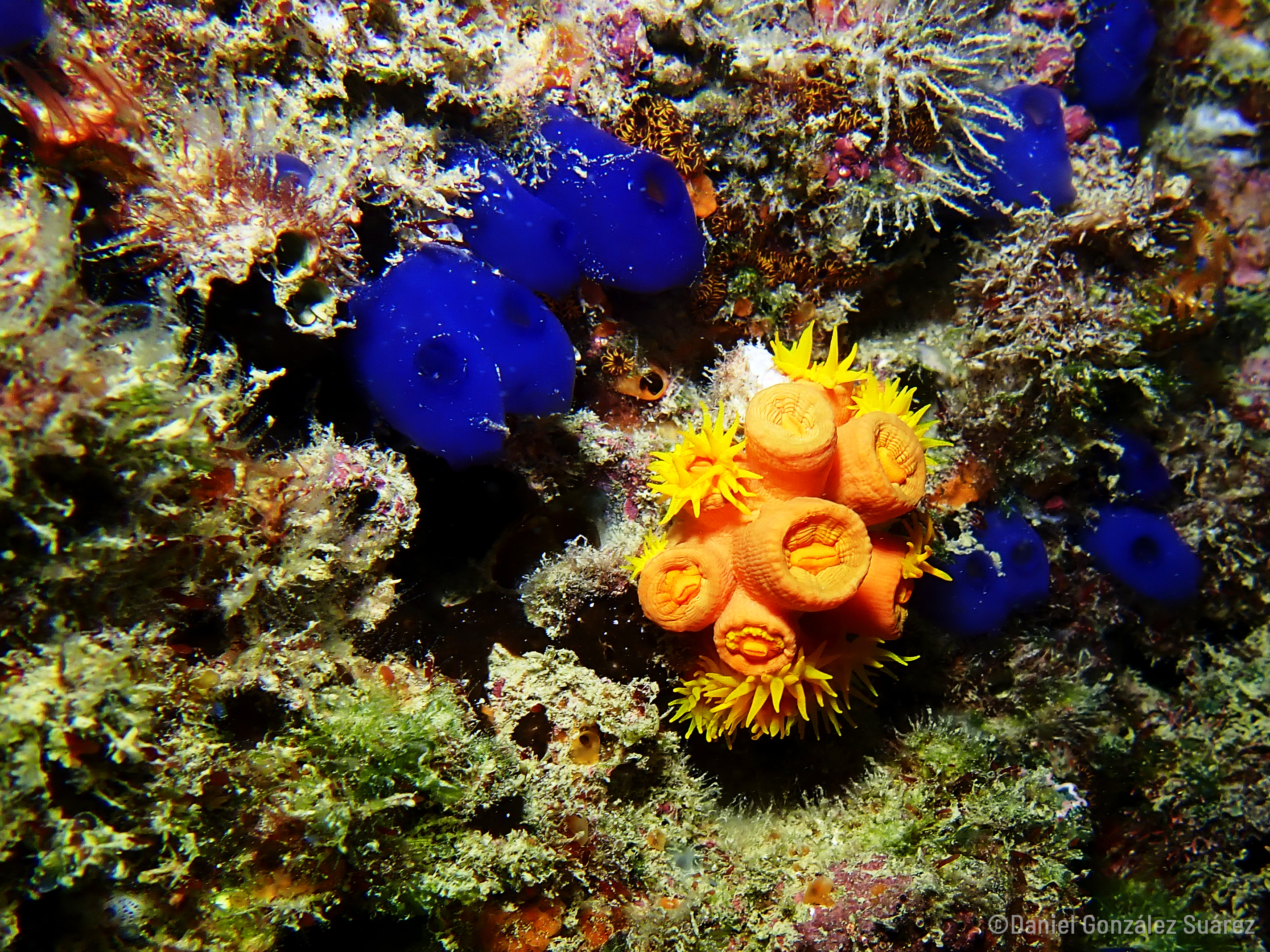
Explaning phylogenetics may come in a separate post as this one comes packed with lots of information. For now, just look at that contrast!
A collection of pictures



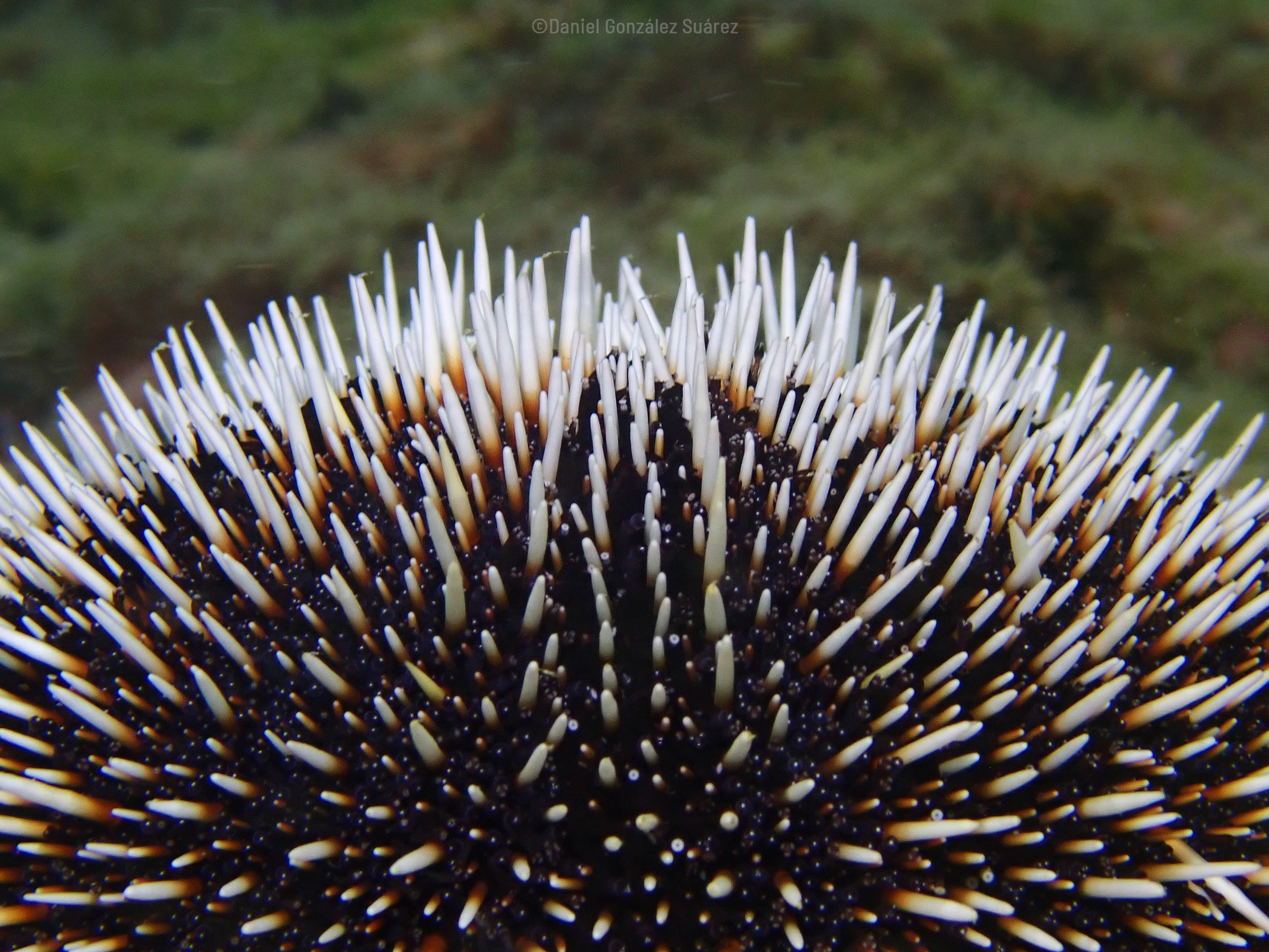

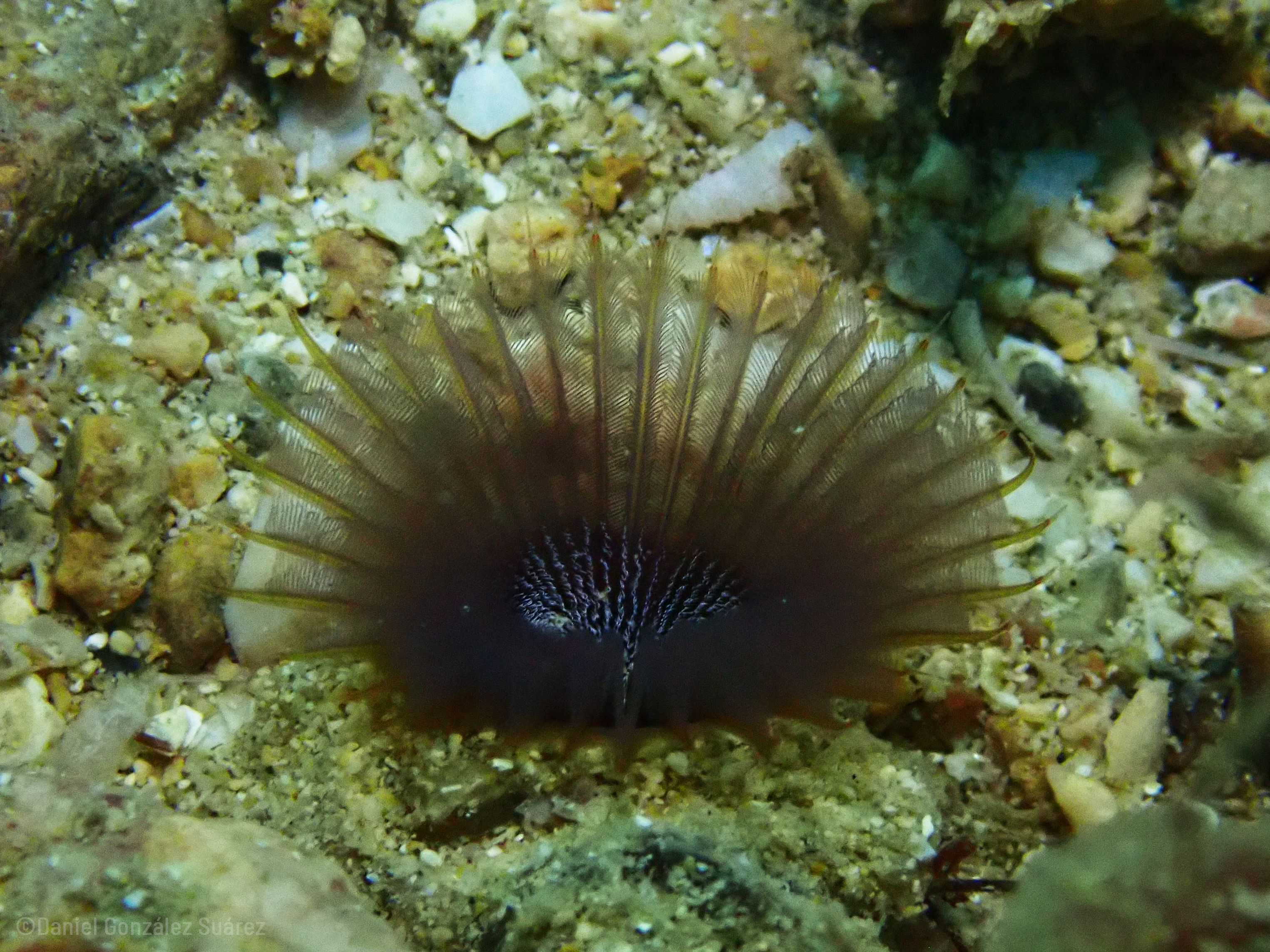

Enjoy Reading This Article?
Here are some more articles you might like to read next: